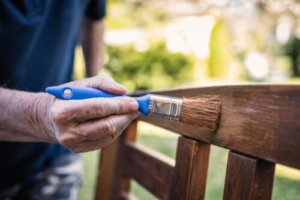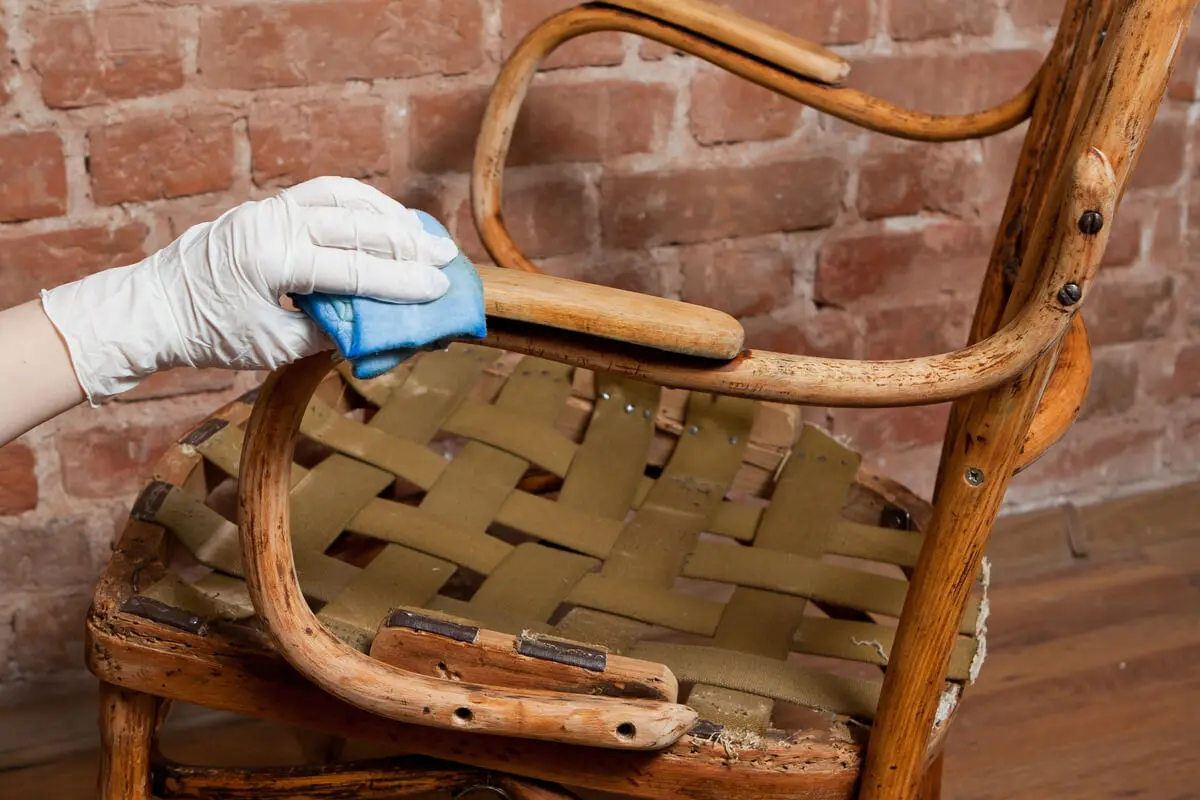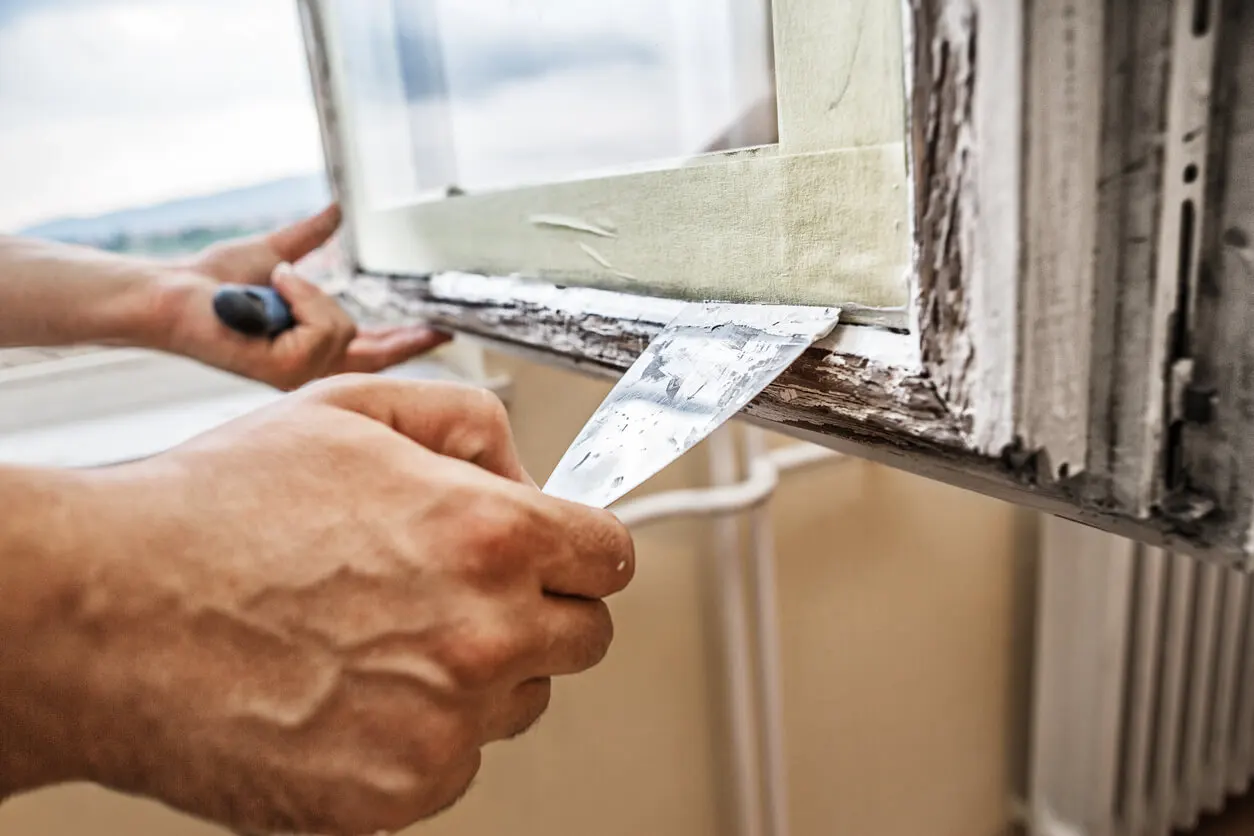Imitation Wood Grain: How to Apply this Painting Technique

Getting a surface to take on the appearance of wood is possible thanks to a simple painting technique. It’s no longer necessary to acquire wooden objects or ornaments. With just a couple of specific products and a rubber tool, you can achieve an imitation wood grain.
This technique can be applied to various surfaces, such as doors, frames, and windows. As long as it isn’t on a porous material, this painting technique gives you a visual effect that makes you forget the original wood. If you have a tight budget, discover the short and easy steps to get a quality imitation wood grain.
What is the technique of imitation wood grain?
This is a type of faux finish that aims to mimic the appearance of natural wood. In this way, it’s possible to give the impression that different carpentry and handicraft objects, such as doors, windows, or furniture, were made with this material.
It’s used to transform various surfaces with a natural wood effect.
It’s also used to accentuate the grain of an already worn wood. This means you can recover the texture and the visual format in an object already made with this material, but which has faded or worn in some way. This can happen due to the passage of time or color wear. So in summary, the technique of imitation wood grain is applied to both new elements and old items that need to be restored.
You might be interested in: 3 Ways to Remove Varnish From Wood
Characteristics of imitation wood grain
The central product that achieves this effect is a kind of lacquer or polyurethane enamel. A well-executed job should reproduce surfaces that are visually similar to natural wood. But, in addition, the color must resemble the fibers of this material and a smooth texture must be achieved.
In the end, the surface finish must be even, smooth, resistant, and smooth, without lumps or porosities. On the other hand, an intermediate or satin shine should be produced, without getting a very shiny effect or a dull one.

Where can it be applied and what tools do I need?
The imitation wood grain effect can be applied on various materials, such as metals, cement, worn wood, or plaster. The important thing is that it isn’t porous.
The technique works for a wide variety of elements that make up the home, both in the structure and in the furniture or decoration. Doors, frames, windows, metal openings, cabinets, and appliances are some possible options to transform into faux wood.
The materials to be used are very few and easy to obtain. Therefore, in addition to the ease of application, it’s also a very economical technique.
- Specific lacquer or enamel. The fundamental element is the wood effect. It can be achieved by combining different shades, according to personal preferences.
- Brush. It’s advisable to use a brush or roller for the application of wood effect paints.
- Rubber stamping tool. An object designed to stamp the knots and the characteristic grain of the wood. It’s passed over the surface after applying the paint, and is available at any home improvement store.
- Damp cloth. This is necessary to sanitize the grainer between the different coats.
- Thinner. At the end of the work, it’s advisable to clean the brushes and rollers with this product.
Steps to perform the imitation wood grain
Once you have all the necessary tools, it’s possible to transform the surfaces with an imitation wood grain. It’s a simple task, in which a series of steps applied with care and precision can give you great results.
1. Preparation of the surface
Apart from ensuring the correct surfaces and materials for this work, it’s important to check that they are dry and clean. This cleaning and preparation has to put emphasis on removing imperfections, dust, grease, dirt, and old paint.
Once it’s all prepared, some people choose to apply a coat of oil sealer or synthetic wood sealer. In the case of metal surfaces, the product must be anti-rust. If it’s cement or plaster, then you’ll need common sealer fixer.

2. Different colors
In general, the wood that we imitate with this technique is pine, although other shades can be achieved by choosing a combination of colors. Two tones are mixed: one lighter and the other darker. The most commonly used are brown, beige, yellow, ochre, green, or cream.
3. Primer
It’s recommended to apply a previous coat of enamel to ensure a better adherence afterwards. This coat is called a primer and consists of a uniform coating that prepares the surface for the final coat.
4. Application of paint
Before opening the can, shake it for a few seconds to mix the product well. When the primer coat is dry, apply a new coat that covers the entire surface uniformly and without lumps.
If there are two colors, apply the first coat with the lighter shade. Once it dries, apply the coat of the darker color with a roller or brush.
In this way, the veining effect will be created. Keep in mind that this is a similar process to the glazing technique.
5. Using the graining tool
Apart from all the previous elements we’ve mentioned, the main tool of this technique is the graining tool. Before the paint dries, pass this tool it over the surface with light movements.
The important thing is to generate the wood grain effect.
Move it gently up and down and, from time to time, swirl it to create the knots that are so typical of this material. Don’t exaggerate the movement, as it can look very artificial. Use the damp cloth to wipe off the paint from the graining between coats.
Continue reading: How to Decorate the Bathroom with Wooden Pallets
Imitation wood graining and other similar techniques
Imitation wood graining isn’t the only variant of this graining technique. Graining can also be used to achieve a rustic effect with paints of any color. The aim is to create visible lines with different intensities, simulating the movements of glazing or combing.
All cited sources were thoroughly reviewed by our team to ensure their quality, reliability, currency, and validity. The bibliography of this article was considered reliable and of academic or scientific accuracy.
- CastilloMorales M. I, , ErdoizaSordo J. J. Acabados para madera en exteriores. Madera y Bosques [Internet]. 1995;1(2):9-22. Recuperado de: https://www.redalyc.org/articulo.oa?id=61700203
- Tamarit Urias J. C, Borjade la Rosa A, FloresVelázquez R, , CoronaAmbríz A. Vida útil de dos barnices para exteriores mediante intemperismo artificial en madera de aile, pino y encino. Revista Chapingo. Serie Ciencias Forestales y del Ambiente [Internet]. 2002;8(1):83-90. Recuperado de: https://www.redalyc.org/articulo.oa?id=62980110
This text is provided for informational purposes only and does not replace consultation with a professional. If in doubt, consult your specialist.








